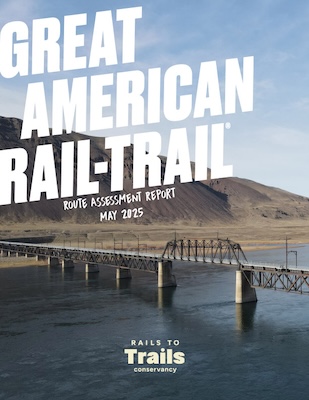Making It Happen
Bike ride to commemorate 5th anniversary of Great American Rail-Trail | Photo by Mariah Miranda Photography
Connecting the Great American Rail-Trail
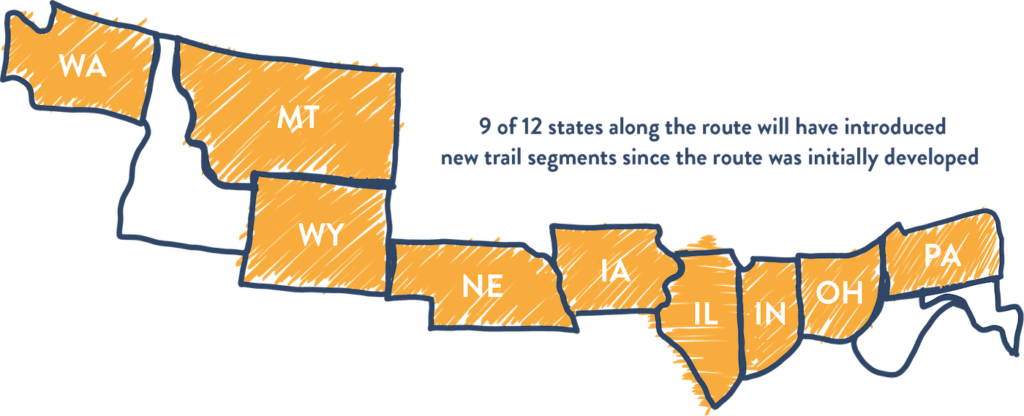
The Great American Rail-Trail promises an all-new American experience, creating new access to the outdoors and America’s heritage, people and places for the millions of trail users who will visit. Across the nation—and the world—only the limits of imagination will limit how people chose to experience the Great American.
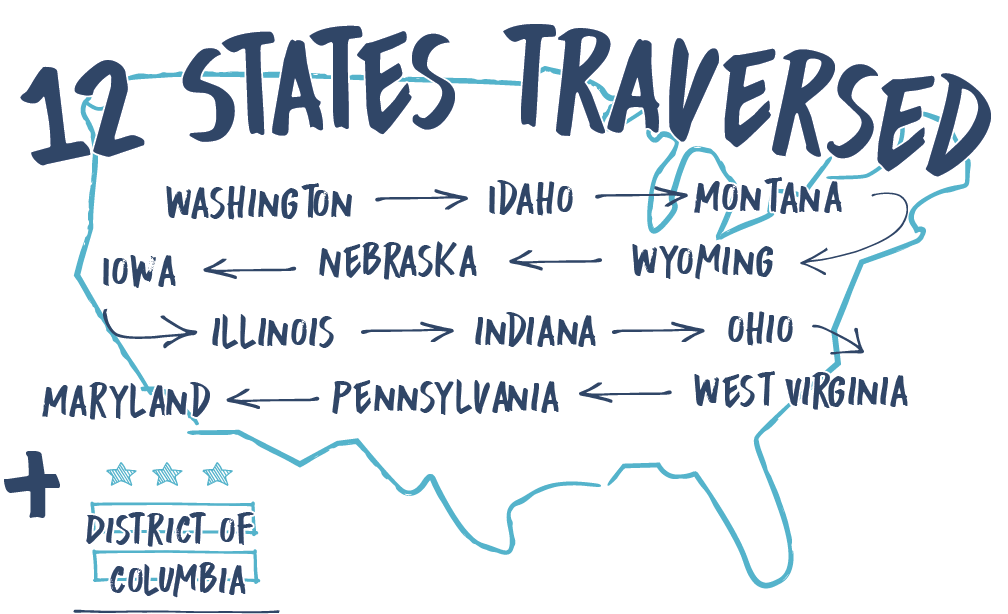

2025 Route Assessment Report
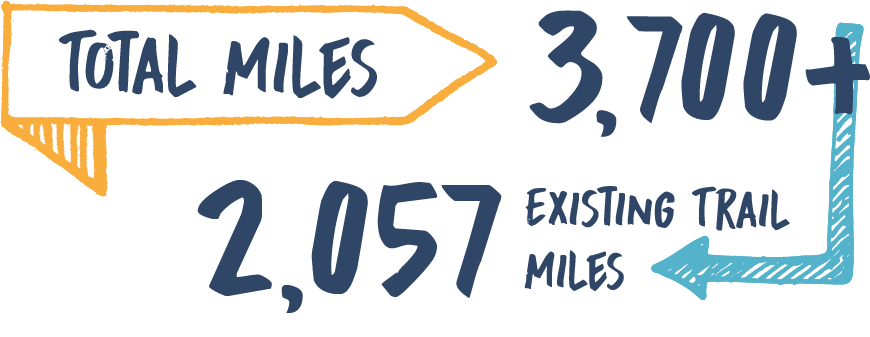

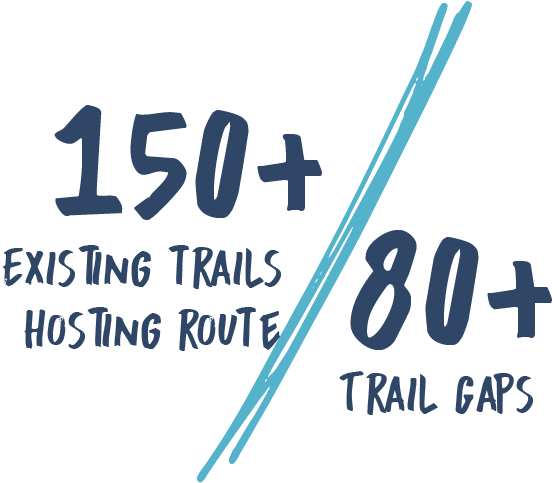
Great American Rail-Trail Route Assessment 2025
The Great American Rail-Trail Route Assessment 2025 defined the preferred route of the Great American Rail- Trail as more than 3,700 miles—with 2,069 miles of existing trails and 1,690 miles of trail gaps.
RTC embarked on a 12-month assessment of route options using its GIS database of more than 34,000 miles of existing, multiuse trails nationwide, and analyzing more than 300 state and local trail plans to identify planned future trails. RTC also met and worked with more than 200 local trail partners and more than 50 state agencies representing the trails along the route, shaping criteria to ensure safe, non-motorized travel on a route that is entirely walkable and bikeable. These trail criteria specify that the Great American Rail-Trail be one contiguous route that is preliminarily more than 80%, and ultimately entirely, off-road and separated from vehicle traffic; comprise existing trails to the extent possible; be reasonably direct from Washington to Washington; be amenable to the state and local jurisdictions through which it will cross; and serve as a catalyst for local economic development, including providing services for long-distance travelers.
Through the assessment, RTC and its partners have defined the preferred route of the Great American Rail- Trail as more than 3,700 miles—with approximately 2,069 miles of existing trails (trails along the route that are built and maintained by dedicated teams of local staff and volunteers) and approximately 1,690 miles of identified trail gaps (sections of trail that still need to be developed).
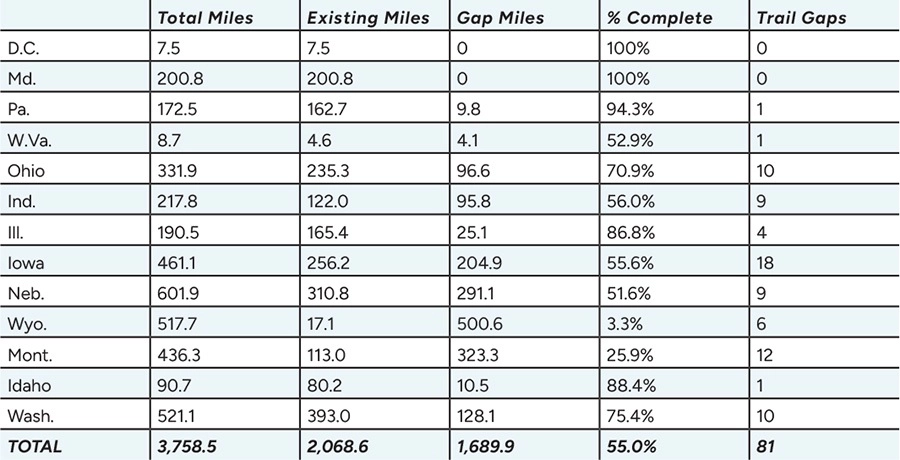
While there are more than 1,600 miles of trails to complete along the route of the Great American Rail-Trail, each trail gap has one or more future trail options identified as possible trail connections. Many of these gaps and proposed future trails are already identified in public plans that have been adopted at the state and local levels. Insight from local trail partners and states has helped to identify the preferred alignment that best corresponds with their priorities, with the intention of maximizing existing trail momentum as the Great American Rail- Trail is connected across the country.

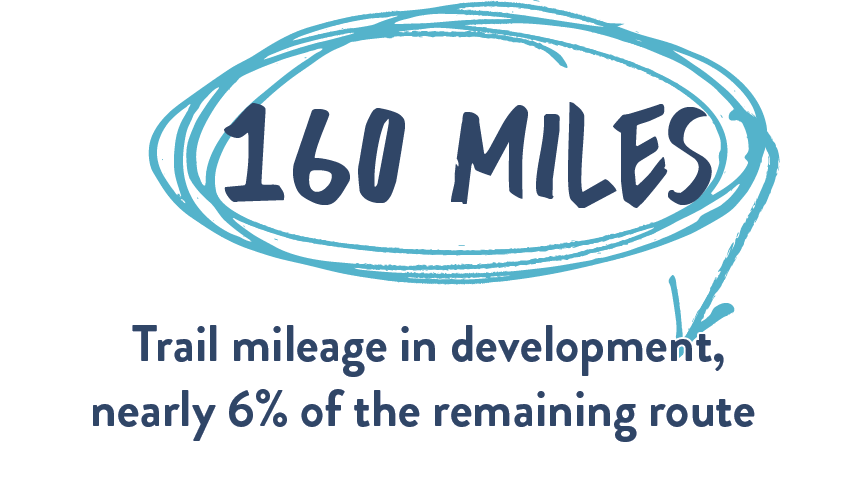
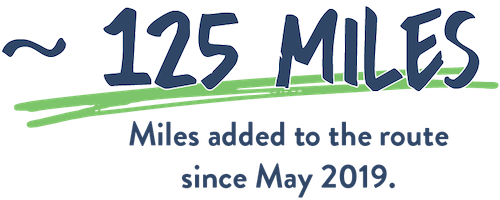




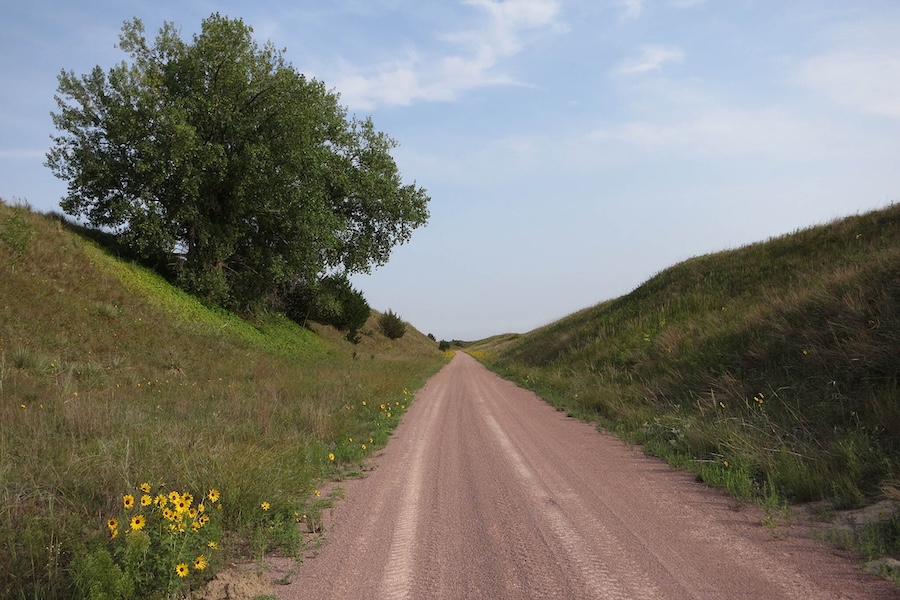
Advocating for Public Funds to Connect the Trail—between Washington and Washington
Creating a trail that spans the nation will require a significant investment of time, expertise and resources. That is why the team at RTC waited until now to commit to the project’s development. It was important that a viable route was possible across the country and that it was well-aligned with the interests of the existing trails and state and local priorities. Now, with the preferred route of the Great American well defined, RTC is ready to lead the movement to complete the trail—including advocating for the local, state and federal funds necessary to close trail gaps and maintain existing trail segments.
Securing public funding for trails has long been a focus of RTC, and the organization will continue to be a leading advocate for this critical resource. Based on RTC’s experiences completing regional trail networks across the country, it is expected that a combination of federal funds dedicated to trail building, as well as state and local funds and private investment, will be critical to complete the trail gaps along the route. RTC actively advocates for federal and state programs used to support trail networks and spines, and walking and biking projects, across the country—and these public funds will be critical in our efforts to complete the Great American.
Frequently Asked Questions
Looking to learn more about the Great American Rail-Trail, Rails-to-Trails Conservancy or the trail movement?
Spurring Trail Completion: Catalyst Initiatives
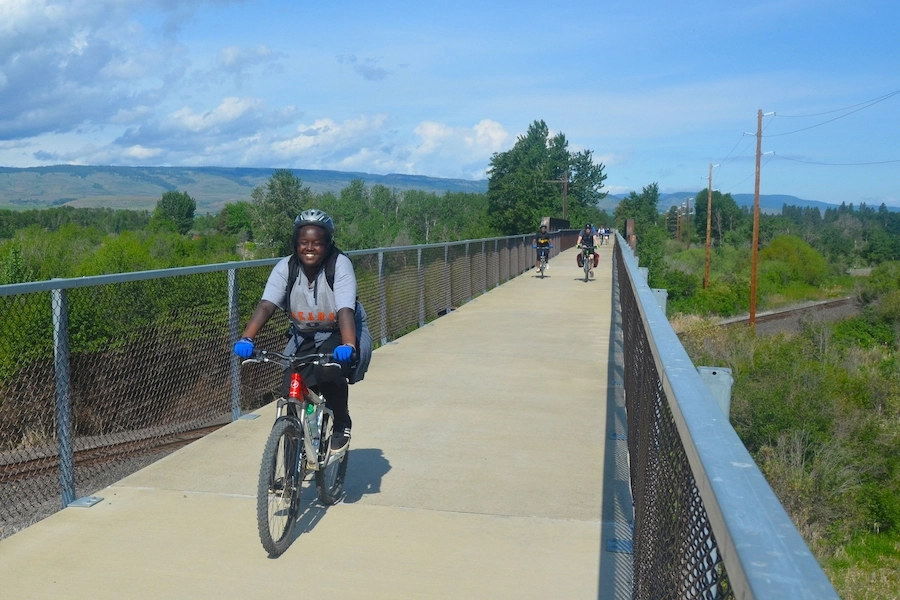
In every state along the preferred route of the Great American, needs for completing the trail vary. To spur trail completion, RTC has identified initial catalyst initiatives—projects or challenges that would most benefit from RTC’s national breadth of resources. For example, along the preferred route of the Great American, RTC will provide trail planning assistance for completing trail gaps; generate public funding support for future trail development or open trail improvements; advocate for local and state trail priorities, and provide communications support and strategy to advance trail priorities along the route; and conduct research critical to advancing trail priorities. Through these initiatives, RTC will directly support local and state partners, investing time, expertise and organizational resources in specific projects that are critical to the ultimate completion of the Great American Rail-Trail.
